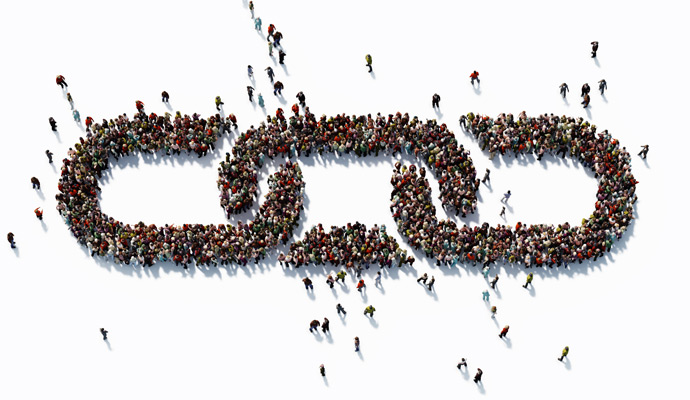The Art of Hypercompetition
Is the idea of sustained competitive advantage dead?
Richard D'Aveni, professor of business strategy at the Amos Tuck School at Dartmouth College, believes it is. According to Mr. D'Aveni, business has entered a new era of hypercompetition, shifting dramatically from slow-moving stable oligopolies to an environment characterized by a quick- strike mentality on the part of companies aimed specifically at disrupting the competitive advantage of market leaders.Mr. D'Aveni says he discovered in his consulting work that traditional strategic concepts were making companies weaker, not stronger. "The old structure was: define an industry, reduce the level of competition and then avoid competition where possible," he says. "But I found that successful companies were not doing any of these things. The best performers were disrupting markets, acting as if there were no boundaries to entry."
In his book, "Hypercompetition: Managing the Dynamics of Strategic Maneuvering" (Free Press), Mr. D'Aveni argues that competitive advantage is no longer sustainable over the long haul. Advantage, instead, is continually created, eroded, destroyed and recreated through strategic maneuvering.
The old goal, Mr. D'Aveni says, was to increase profitability by legally restraining the level of competition in an industry. Companies avoided price wars, segmented the market to avoid head-to-head competition and tried to keep the number of competitors low by putting up entry barriers around their industries. Today, he points out, this strategy is "literally impossible."
He says four driving forces are contributing to the new era of hypercompetition: customer changes, including fragmenting tastes; rapid technological change; falling geographic and industry boundaries as markets globalize, and deep pockets among competitors due to the rise of giant global alliances in a raft of industries.
"The way to go about winning today is to obsolete the current advantages of the leader," Mr. D'Aveni says.
The Microsoft Corporation, for example, has long been considered invincible because it controls the operating system market for most of the world's personal computers. But suddenly, Mr. D'Aveni says, three efforts are under way simultaneously to make Microsoft's hegemony obsolete. For one, chip manufacturers are imbedding software directly into semiconductor chips, doing away with the need for separate operating software. For another, there is the move toward a low-priced, dumb terminal-like device that hooks directly into the Internet and takes advantage of software such as Sun Microsystems' Java. And last, there are the voice recognition systems, offered by the likes of the telecommunications companies, that will circumvent the need for current operating systems.
"Everyone thought I.B.M. was invincible at one time, as well," Mr. D'Aveni notes.
The Dartmouth professor foresees the untapped distribution capabilities of the Internet and the World Wide Web as the perfect vehicle for "disrupting the apple cart" of a variety of industries. "What will happen to publishing, for example," he asks, "when reporters or authors can transmit their work directly to the reader over the Internet? Why does Michael Crichton need a publisher when he can eliminate the middle man? No doubt the C.E.O.'s of the publishing houses are worried."
Most difficult for market leaders is that tomorrow's competitors are not even on the radar screens of most companies, Mr. D'Aveni says. With weak entry barriers to most markets, he adds, the "unconven- tional player attacks suddenly from outside the industry with unexpected methods, often with devastating effect."
Despite these new parameters, Mr. D'Aveni suggests that long-term dominance of an industry is still possible even though sustainable advantage has gone by the boards. It is possible to win in hypercompetition by mastering the art of dynamically repositioning oneself in four key arenas: price/quality, know-how/timing, stronghold creation/invasion and deep pockets.
Stakeholder satisfaction is the key to winning each dynamic interaction with competitors
![]()
For a company to sustain its success in the hypercompetitive era, Mr. D'Aveni says, it must be willing to take more risks than ever before. The old business model that focused on such issues as culture, human resources, structure and infrastructure, objectives and strategy may now be outmoded, he says. Instead, what is needed is a new set of guidelines that provides a vision for generating the next market disruption.
Mr. D'Aveni labels these stakeholder satisfaction, strategic soothsaying, speed, surprise, signals, shifting the rules and simultaneous or sequential strategic thrusts.
-
Stakeholder satisfaction is the key to winning each dynamic interaction with competitors. The critical stakeholder group, of course, the one that decides if a move creates a new advantage, is the customer. But employees are important stakeholders as well and they must be empowered to generate new processes, methods and products for serving the customer.
- Strategic soothsaying is the process for seeking out new knowledge for predicting what customers will want in the future.
- Speed is crucial to take advantage of opportunities and respond to counterattacks by competitors.
- Surprise enhances a company's ability to stun a competitor, to build up superior position before a competitor can counterattack. Mr. D'Aveni uses the once impregnable I.B.M. as an example. While I.B.M. was trying to dominate the personal computer market with its vaunted sales force and brand name, Michael Dell shocked Big Blue by creating a highly successful direct mail and toll-free telephone sales and distribution model that grabbed market share and caught the industry giant flat-footed.
The remaining S's focus on Tactics for Disruption, the key methods for enhancing the effectiveness of disruptions.
- Signals refers to the verbal announcements of strategic intent to dominate a marketplace. These signals can be used to manipulate the future moves of rivals. Product announcements, for example, often force competitors to rethink their plans or redesign their own products, Mr. D'Aveni says.
- Shifting the rules of the market can create tremendous disruption for competitors. The Gillette Company, for example, shifted the rules in shaving when it introduced its Sensor disposable razor. The Sensor transformed the market from one focused solely on convenience and price to one focused on premium quality, along with convenience and price.
- Simultaneous or sequential thrusts refers to a company using several moves, such as a series of simultaneous product announcements or geographic market entries done in concert, to mislead or confuse a competitor.
"The characteristics of modern business are not so much structure as dynamic change," Mr. D'Aveni concludes. "We'll see the disruption of competitive advantages far more frequently in this environment." ![]()
| Authors
Glenn Rifkin, glennrifkin@worldnet.att.net Glenn Rifkin has covered technology for the New York Times and has written for the Harvard Business Review and Fast Company. He is coauthor of Radical Marketing (HarperBusiness, 1999) and The CEO Chronicles (Knowledge Exchange, 1999). |



